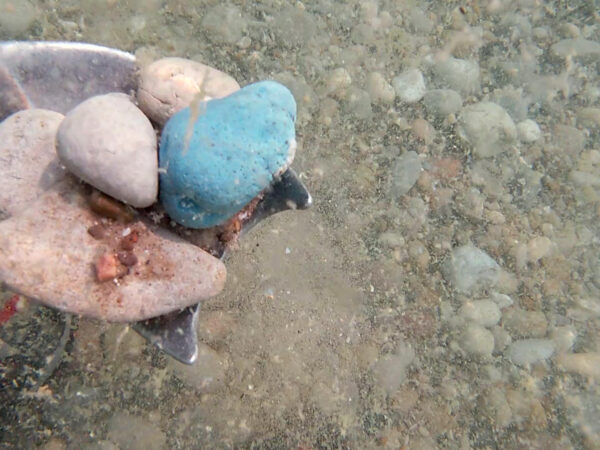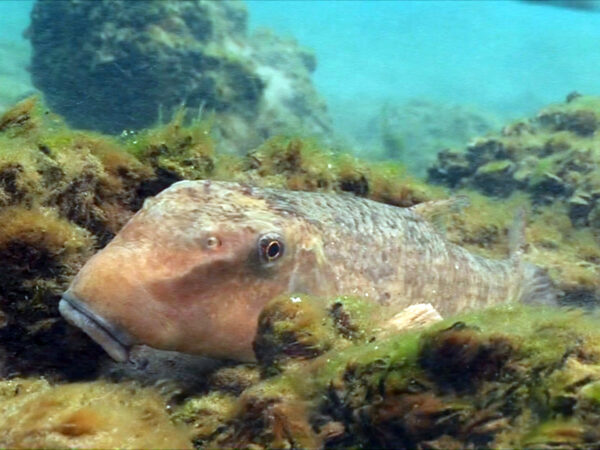
As the pandemic wears on, antidepressant use is on the rise.
Claims for selective serotonin reuptake inhibitors increased by 17% in Canada between 2019 and 2020, according to one report. In the United States, the number of prescriptions filled per week for antidepressant, anti-anxiety and anti-insomnia medications increased 21% between Feb. 16 and March 15, 2020, peaking the same week the World Health Organization declared COVID-19 a pandemic.
While the drugs offer a better quality of life to millions of humans, they are among the most commonly detected medications in aquatic ecosystems where scientists suspect they are causing subtle – but critical – changes to the behavior of fish and insects.
Our bodies don’t absorb all of these drugs, and we excrete them in our urine. Wastewater treatment plants are designed to remove aquatic contaminants such as phosphorus and nitrogen, but not the complex chemicals found in pharmaceutical products. Once the treated wastewater is released back into the environment, it ends up in lakes and rivers.
Test tube in a lake
Ecotoxicologist Jose Luis Rodriguez Gil will spend the next year investigating the implications of excreted antidepressant drugs in a unique whole ecosystem experiment in a boreal lake in northern Ontario. His findings could have implications for larger bodies of water, including the Great Lakes.
“We’re good at assessing contaminants’ dramatic effects, such as death and reduced reproduction of fish, but there’s a lack of understanding about subtle effects,” said Luis Rodriguez Gil, a researcher with the University of Manitoba and the Experimental Lakes Area.
Located in a remote region of northwestern Ontario east of Kenora, the ELA site is comprised of 58 small lakes and their watersheds that are set aside for scientific research.
Operated by the Winnipeg, Manitoba-based International Institute for Sustainable Development, the ELA is the only research facility in the world dedicated to assessing human impacts on whole aquatic ecosystems.
Once the ice has melted in late May or early June, Luis Rodriguez Gil and his team will boat out into one of the lakes and set up their experiment – ten floating enclosures. The 2-meter (6.6 foot) diameter circles are composed of plastic curtains that extend to the lake bottom. The team will add various concentrations of venlafaxine – one of the most prescribed antidepressants – to the water. Three of the ten enclosures will remain untreated as a baseline for comparison.
“We’re basically creating a test tube in the lake. Ten of them actually,” said Luis Rodriguez Gil.
Bolder fish
Over the following 10 weeks, he and his team will monitor changes in the number and composition of various species of algae, zooplankton, aquatic insects and fish. They will also be paying close attention to fish behavior.
Previous experiments in the lab exposing fish to antidepressants showed that sometimes they become bolder.
“We don’t know what it means to be bolder fish in a lake,” said Luis Rodriguez Gil. “Perhaps a bolder fish will move out of hiding spots and make themselves more vulnerable to being eaten by a bigger fish. Or maybe they will expend more energy and not have enough for reproduction or growth.”
The enclosures will remain in place after the lake ices over again. The team hopes to visit at least a couple times over the winter to take measurements and expects to have preliminary results by the winter of 2022. They expect to demonstrate the concentrations at which subtle changes to fish behavior begin to take effect, no matter how big the body of water.
“The weight of evidence we collect can be used to inform decision-making for other ecosystems – even one as large as the Great Lakes,” said Luis Rodriguez Gil.
Catch more news on Great Lakes Now:
Salt Levels: The effects of wintertime de-icing linger in Toronto-area rivers in the summer
Early Detection: When it comes to Great Lakes invasives, prevention is the only cure
Last dam standing: Traverse City fish restoration project on the ropes
API key not valid. Please pass a valid API key.Featured image: The study setup will look a lot like a previous ELA study into the effects of Metformin, a diabetic drug. (Photo Credit: IISD)




